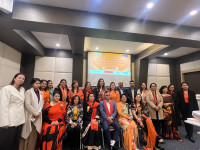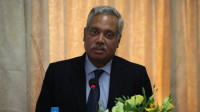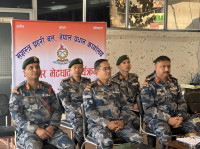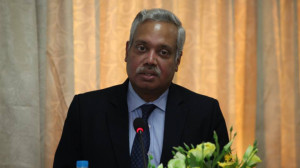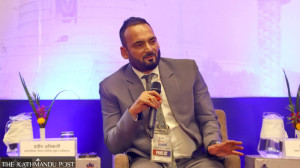National
SLC results out, new school system in
With the results of School Leaving Certificate (SLC) out, the country on Thursday bade farewell to the 10-year schooling system that had been in practice for more than last eight decades..jpg&w=900&height=601)
Binod Ghimire
With the results of School Leaving Certificate (SLC) out, the country on Thursday bade farewell to the 10-year schooling system that had been in practice for more than last eight decades.
Parliament last week passed an education bill last week, paving the way for school restructuring, as per which next year onwards 12-year school education system will be in practice.
SLC results this year were published according to Letter Grading System.
Over 97 percent students have been able to get through what earlier was dubbed the “Iron Gate”, with those scoring below D+ (GPA 1.2-1.6 equivalent to 30-39 percent) in at least one subject in their respective faculty not qualifying for further education. Only 11,476 students under the regular category have been disqualified to get enrolled in Grade 11.
“School education evaluation system has entered a new phase starting this year,” said Education Secretary Bishwo Prakash Pandit. “Coincidently, this is the last SLC under the 10-year schooling system.”
Starting next year, the grade 10 examination will be held at the regional or provincial level while the school leaving exam will be held after grade 12, which will most likely be called Higher School Leaving Certificate Examination (HCLCE).
Out of 437,326 students who appeared in the examination under the regular category, around 97 percent (425,580) are eligible to enroll themselves in Grade 11 in one of 12 categories of higher secondary schooling prescribed by the government. However, they have to secure at least above D+ in one of the subjects related to the faculty they want to study.
Last year only 47.43 percent students had passed the SLC exam.
Under the Letter Grading System, the Office of the Controller of Examinations (OCE) has divided the results into nine categories with the maximum Grade Point Average (GPA) of 4.
The results show 16,454 students have got the highest grade A+ (3.6-4 GPA) which is equivalent to above 90 percent of marks. Among the nine grades, the highest numbers of students have got C (104,278) followed by C+ (94,716 students).
According to Examination Controller Krishna Prasad Kapri, the students who have scored D and D, or D and E, or E and E in two subjects can take supplementary examination will be held from July 29.
As many as 147,583 students—108,326 from regular and 39,257 from exempted category—can sit for the supplementary examination.
Though the system has been hailed by many as an important reform in the school education sector, education experts have a different take. They claim that grading system should evaluate students through continuous assessment but the OCE has adopted the measure “to judge students from the three-hour examination”.
“This is not the right way of evaluation,” said Man Prasad Wagle, an education expert.
Experts have also expressed dissatisfaction at the Higher Secondary Education Board’s move of prescribing the courses for students based on their performance. “The HSEB or Education Ministry cannot prescribe the courses; it should be the call of colleges or universities,” said Kedar Bhakta Mathema, former vice-chancellor of Tribhuvan University.
According to the HSEB decision, a student has to have at least 2 GPA to study Science stream while s/he must have 1.6 GPA to study Management, Humanities and Education stream. Similarly, according to the HSEB, one must have at least D+ grade in compulsory five subjects— English, Nepali, Mathematics, Social Studies and Science—to get admission in Grade 11.
asdf




 7.12°C Kathmandu
7.12°C Kathmandu
